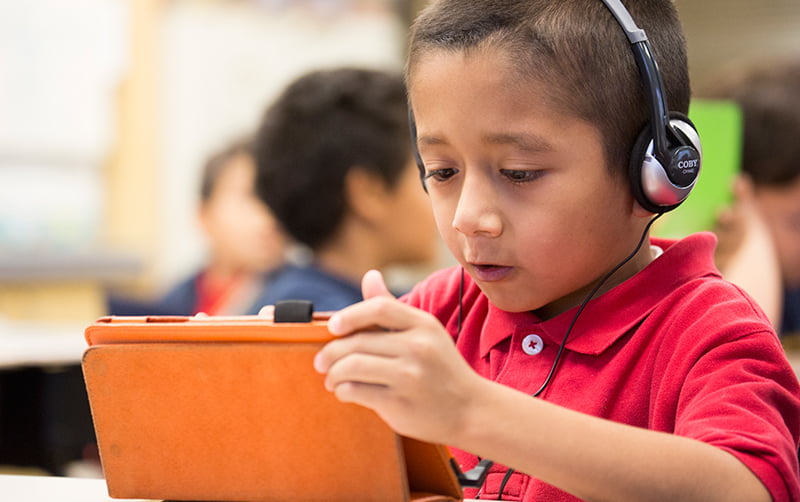
Former K-12 teacher Tim Green, Cal State Fullerton professor of elementary and bilingual education and an educational technology expert, is passionate about working with schools and districts on technology initiatives to keep young students safe online.
Green, who has taught at CSUF since 1999, focuses his research on the integration of educational technology, instructional design and online distance education, and is the author of numerous articles and books related to these topics. He is the co-author of “Securing the Connected Classroom: Technology Planning to Keep Students Safe,” his latest book that helps education leaders create a community of digital citizens.
What is a secure technology environment in K-12 schools?
It is a teaching and learning environment where students and teachers have access to the tools they need, yet adequately protects them from threats and things that could possibly harm them, such as accessing inappropriate content, online predators, cyberbullying, data and identity theft, viruses and malware, and copyright infringement. It’s important to note that what might be considered a secure technology environment in one K-12 school may not be the same for another. Schools are complex environments, and as such, there is not a one-size-fits-all model to what a secure technology environment looks like for K-12 schools.
Why is this important in today’s digital age?
We live in a digitally connected world where students have access to a wide range of information and individuals through a number of different devices. Exposure to threats exists as a result of this access. As educators, we need to maintain environments where we protect students as much as we can by understanding the issues involved with this technology.
What are some of the security concerns and challenges in schools?
Student privacy is often one of the top security concerns. But student privacy can mean different things to different people. There are other concerns as well. My co-author and I addressed many of these concerns in a previous book, “Security vs. Access: Balancing Safety and Productivity in the Digital School,” where we described real and perceived threats that students face when they use digitally connected technology. Cyberbullying, online predators and data theft are some examples.
What is the role of educators in keeping students safe on the internet?
It’s important that teachers and administrators are aware of the potential real and perceived threats related to students using technology at school. This understanding allows them to be able to appropriately deal with situations if needed. It also allows them to develop and maintain learning environments that provide an appropriate balance of access to technology while keeping students safe. Teachers need to be part of the conversation about how and when technology is used in schools. Students should also be part of the conversation. It is also important for teachers and administrators to teach students what it means to be digital citizens who are capable of using technology in ways that are appropriate — from both legal and ethical standpoints. Teachers and administrators also need to model this appropriate behavior.
[Source:-Csuf News Centre]




